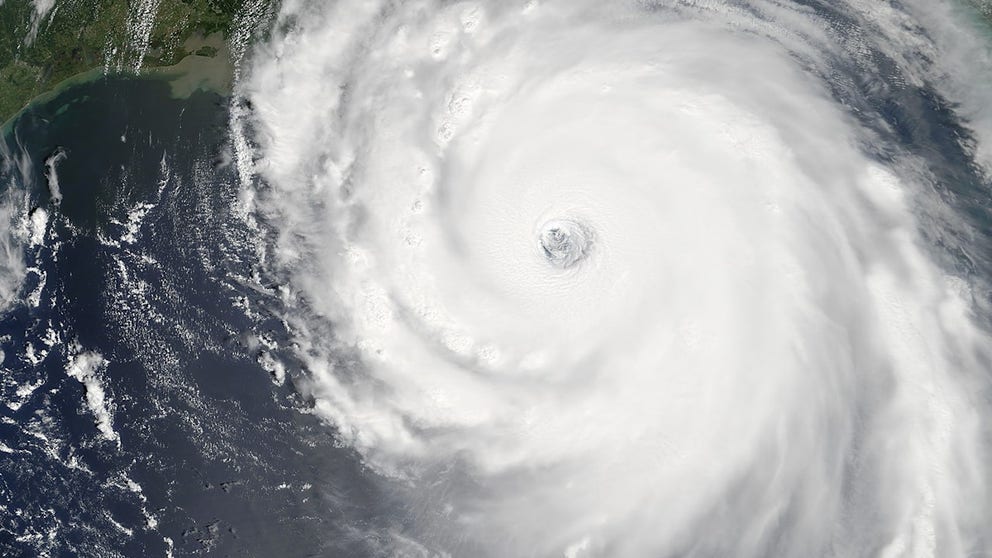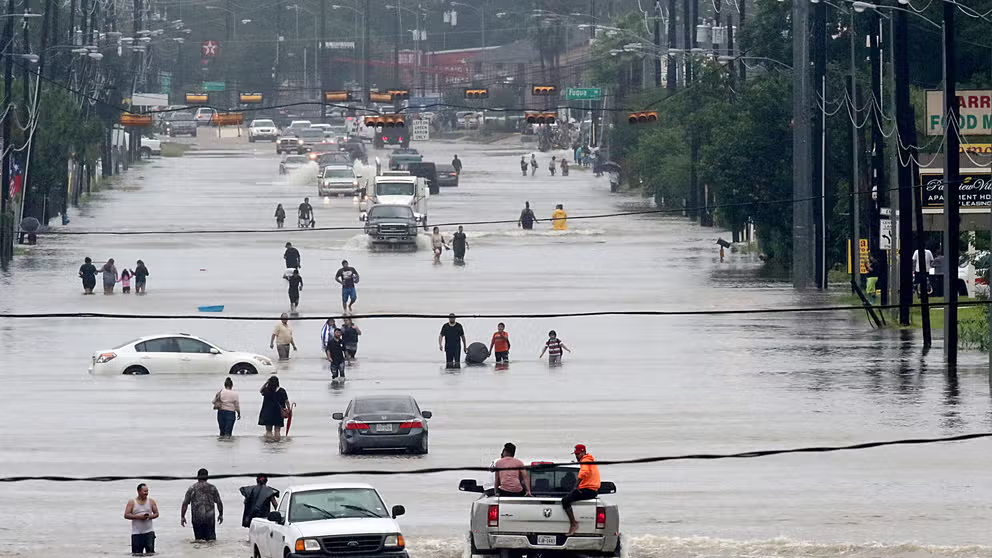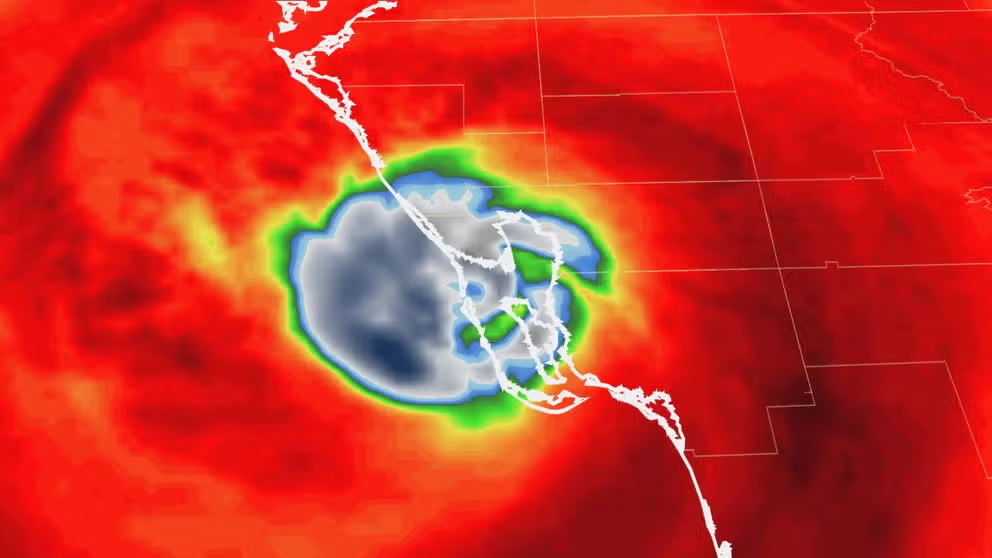Top 5 costliest hurricanes in US history
Two of the costliest U.S. landfalling hurricanes occurred during the busy 2017 season. Adjusted for inflation, the season produced totals in excess of $300 billion, making it the most expensive on record. During the record-breaking year, Hurricane Harvey struck Texas, Irma impacted Florida, and Maria devastated Puerto Rico.
Hurricane names Fiona and Ian have been retired
The World Meteorological Organization has retired the names "Ian" and "Fiona" from the list of hurricane names.
Since the mid-1800s, more than 300 hurricanes have impacted the country’s coastline, but it is only when atmospheric conditions perfectly align that these large storms can become record-breakers.
Major hurricanes such as Katrina, Harvey and Ian top the list for being the costliest storms in U.S. history.
Cost-adjusted totals run between $100 billion to $200 billion per storm, making the disasters some of the most expensive in world history.
Due to the death and destruction the cyclones caused, the World Meteorological Organization has retired the historical names, meaning they’ll never be used again in the Atlantic basin.
The latest storm to be added to the list of the costliest U.S. landfalling cyclones is Hurricane Ian of 2022. NOAA estimated the Category 4 storm to have caused $114.0 billion, with the majority occurring in Florida.
Here’s a list of the top 5 costliest hurricanes in the U.S.
WHY IS THE RIGHT SIDE OF A HURRICANE MORE DANGEROUS?

Top 5 costliest U.S. hurricanes
(FOX Weather)
1. Hurricane Katrina (2005): $191.3 billion
The costliest U.S. hurricane ever to make landfall was Hurricane Katrina in August 2005.
The Gulf Coast storm struck Louisiana and Mississippi as a Category 3 hurricane on the Saffir-Simpson Hurricane Wind Scale.
Sustained winds of 125 mph helped push a storm surge upwards of 30 feet ashore, but the breaches of levees around New Orleans caused the majority of the damage.
Surveys estimated damage topped $191.3 billion, based on 2023 Consumer Price Index values.
In addition to the loss of property, nearly 1,400 people were reported to have been indirectly or directly killed by the storm.
No other tropical cyclone has had a damage figure come close to replacing Katrina’s spot for being the costliest disaster.
WATER FROM HURRICANES, TROPICAL STORMS KILLS MORE IN US THAN WIND
A look back at Hurricane Katrina
More than a decade later, some communities in New Orleans are still trying to recover from Hurricane Katrina.
2. Hurricane Harvey (2017): $152.2 billion
The nation’s fourth-largest city was the subject of days of flooding during the devastating 2017 hurricane season courtesy of Hurricane Harvey.
The cyclone stalled for days after moving inland and dropped several feet of rain along the Texas coastline.
"Harvey was the most significant tropical cyclone rainfall event in United States history, both in scope and peak rainfall amounts, since reliable rainfall records began around the 1880s," the National Hurricane Center stated in its post-storm assessment.
NOAA estimated damages at around $152.2 billion, and more than five dozen deaths were tied directly to the storm in the Lone Star State.
Harvey replaced 2008’s Hurricane Ike for being the costliest disaster in Texas history.
Ike made landfall as a Category 2 storm over Galveston and was responsible for $41.4 billion in damages.
HURRICANE HARVEY: BY THE NUMBERS
Remembering Hurricane Harvey 5 years later
It's been five years since Hurricane Harvey wreaked havoc on Texas. After making landfall, the storm stalled in the Houston area for four days unleashing relentless rain causing catastrophic flooding. FOX Weather's Britta Merwin has a look back at Harvey's devastation and how the city and surrounding areas have recovered.
3. Hurricane Ian (2022): $114.0 billion
The most recent tropical cyclone to rank in the top costliest is Hurricane Ian from 2022.
The Category 5 storm was responsible for at least $114 billion in damage in the U.S., and it was the deadliest hurricane to strike Florida in more than 80 years.
The September hurricane weakened only slightly to a Category 4 storm before landfall, but that did not stop the cyclone from producing a devastating storm surge for communities around the Fort Myers area.
Half the hurricanes that make up the top ten list for costliest disasters are "I"-named storms.
Due to the nature of the alphabet, the ninth named usually forms around September 16th, when water temperatures are at the warmest and atmospheric conditions are conducive for extensive development.
HURRICANE IAN BY THE NUMBERS: THE SCOPE OF THE CATASTROPHIC DAMAGE
A look back at Hurricane Ian
Hurricane Ian was a monstrous Category 4 hurricane with 150-mph winds when it first came ashore on Cayo Costa, Florida. About 90 minutes later, the hurricane made a second Florida landfall – this time just south of Punta Gorda with 145-mph winds. Hurricane Ian made its final landfall in South Carolina.
4. Hurricane Maria (2018): $109.8 billion
The worst cyclone to strike Puerto Rico since the 1928 Okeechobee hurricane was Hurricane Maria in 2018.
Hurricane Maria made landfall as a Category 4 storm with winds estimated to be 155 mph on September 20, 2018. Due to a reorganizational period, known as an eyewall replacement cycle, the cyclone did not impact the U.S. territory at peak strength.
In response, the Federal Emergency Management Agency said it embarked on the largest and longest federal effort to any disaster in the country’s history.
The hurricane’s 155 mph winds and torrential rainfall caused an electrical outage for the whole island. It took electrical crews nearly a year to repair and restore the entire grid.
According to a recently revised report, 2,975 people were either directly or indirectly killed during the event.
Survey estimates put the damage figure at around $109.8 billion, based on 2023 Consumer Price Index values.
FIONA VS. MARIA: HOW THE TWO HURRICANES COMPARE IN PUERTO RICO
Hurricane Maria survivor, uncle of FOX Weather's Nicole Valdes, reflects 5 years later
FOX Weather Correspondent Nicole Valdes introduces us to her uncle Rafael Cintron, who reflects on Hurricane Maria five years later.
5. Hurricane Sandy (2012): $84.6 billion
Superstorm Sandy initially developed in the Caribbean, south of Jamaica, but its October track took it up the Eastern Seaboard, impacting every state from Florida through Maine.
While it didn’t officially make landfall as a true warm-core hurricane, its shield of influence stretched hundreds of miles and impacted the entire Northeast Interstate 95 corridor.
The system’s core official moved onto land near Brigantine, New Jersey, on October 29, 2012.
According to NOAA, the damage was estimated at $84.6 billion, based on 2023 Consumer Price Index values.
New Jersey and southern New York were the worst hit, with severe flooding, damaging winds and erosion.
Observation sites reported a storm surge of more than a foot in the tri-state, which paralyzed the more than 100-year-old subway system.
Authorities tied 147 direct deaths to the storm from the Caribbean to Canada, with at least 72 fatalities occurring in the mid-Atlantic and Northeast.
SUPERSTORM SANDY 10-YEAR ANNIVERSARY: WHY THE 2012 SUPERSTORM WAS SO DESTRUCTIVE IN THE NORTHEAST




